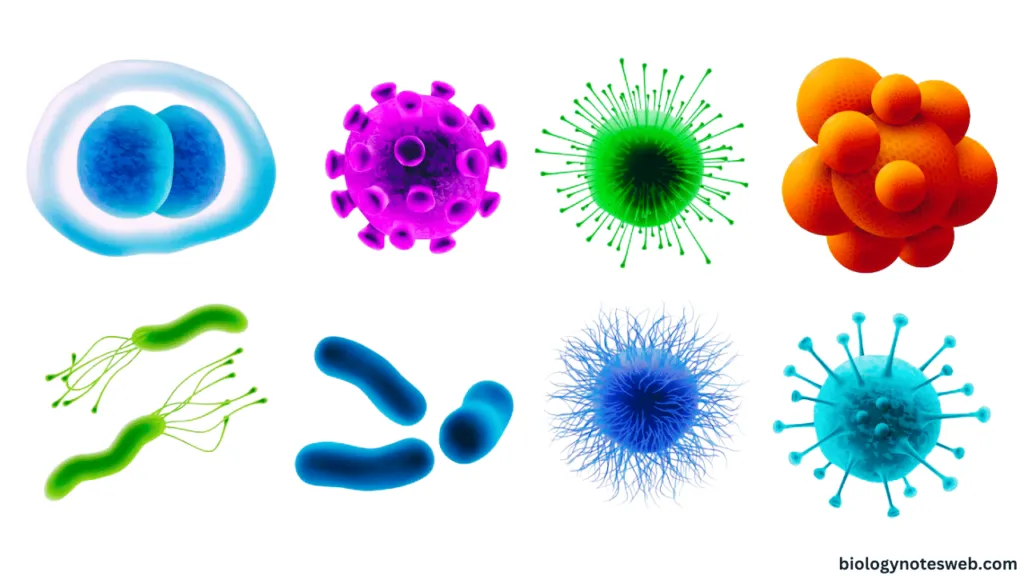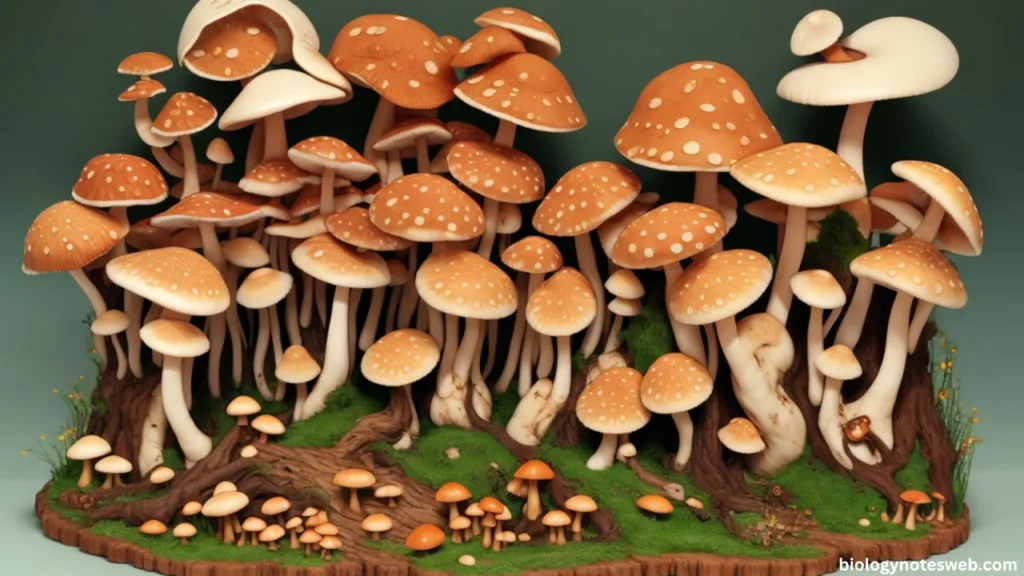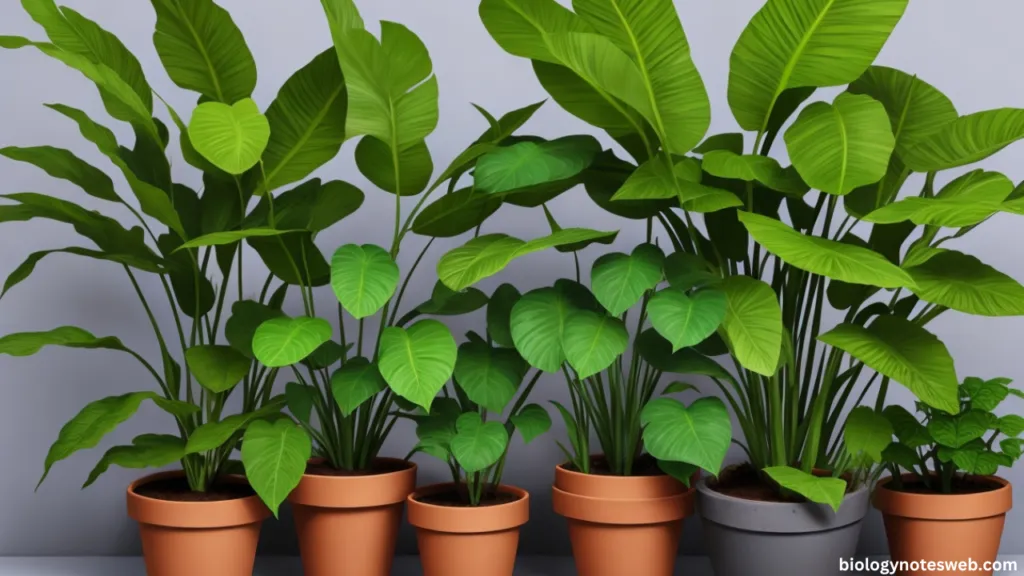In the five kingdom classification system organisms are divided into Monera, Protista, Fungi, Plantae & Animalia based on cells, nutrition, and evolution.

Classification organizes organisms into groups, or sets based on their similarities and differences. The study of organisms becomes simpler with this systematic approach..
A Brief History of Biological Classification
Humans have long sought to organize the living world systematically. Aristotle divided all organisms into two groups: plants and animals.
The system remained simple for centuries until advances in microscopy and evolution theory allowed for more complex groupings.
In 1866, Ernst Haeckel proposed adding a third kingdom Protista to include single celled organisms like protozoans and algae.
Later, Robert Whittaker built upon Haeckel’s system by identifying differences between fungi and other plants, creating the Fungi kingdom.
But it was not until 1969 that Whittaker outlined his seminal five-kingdom classification scheme, which biologists still employ today.
By relying on evolutionary relationships and important cellular distinctions, Whittaker categorized life into five kingdoms: Monera, Protista, Fungi, Plantae, and Animalia, setting his system apart..
The Five Kingdom Classification System
Whittaker’s five kingdoms represent the broad categorical levels of the taxonomic hierarchy applied to all living organisms on Earth. We can define each kingdom based on distinguishing characteristics:
| Kingdom | Example Organisms | Cell Type | Cell Wall | Mode of Nutrition |
|---|---|---|---|---|
| Monera | Bacteria, Archaea | Prokaryotic | Polysaccharides, proteins | Autotrophic or heterotrophic |
| Protista | Algae, Protozoa | Eukaryotic | Some have cell walls | Autotrophic or heterotrophic |
| Fungi | Mold, Mushrooms, Yeast | Eukaryotic | Chitin | Heterotrophic – absorptive |
| Plantae | Mosses, Ferns, Flowering Plants | Eukaryotic | Cellulose | Autotrophic – photosynthetic |
| Animalia | Sponges, Insects, Fish, Humans | Eukaryotic | No cell wall | Heterotrophic – ingestive |
Kingdom Monera
The Kingdom Monera contains all prokaryotic single-celled microorganisms that lack a nucleus or other membrane-bound organelles in their cells.
Within Moneran cells, the genetic material comprises a single loop of DNA floating freely in the cytoplasm rather than enclosed within a nuclear membrane. The cell walls of Monera comprise polysaccharides and proteins rather than cellulose.

Monerans use diverse metabolic strategies. Some species are autotrophs, like cyanobacteria, that can make their food through photosynthesis, while others are heterotrophs that use organic compounds for nutrition.
Many Monerans have simple spherical shapes, like cocci bacteria, while others have more complex morphologies.
Rod-shaped bacilli and spiral-shaped spirilla bacteria exemplify the morphological diversity within the kingdom. Mycoplasma bacteria represent an unusual Monerans group that entirely lacks a cell wall.
Within the Kingdom Monera, someone currently divides organisms into two major categories based on fundamental genetic and biochemical differences: Bacteria and Archaea.
Eubacteria and cyanobacteria fall under the traditional bacterial domain, while extremophile organisms classified as Archaea inhabit harsh environments like salt lakes, hot springs, and Antarctic ice.
Kingdom Monera contains many organisms of tremendous ecological and medical importance. Cyanobacteria produce oxygen through photosynthesis, while other Monerans cycle through vital elements like nitrogen, sulfur, and carbon.
Major Taxa Within Kingdom Monera
- Archaebacteria–Single-celled prokaryotes capable of living in extreme environments.
- Eubacteria–The more typical bacterial prokaryotes like Escherichia coli. Responsible for cycles of nutrient transformation.
- Cyanobacteria–Photosynthetic bacteria that produce oxygen. Crucial in shaping Earth’s atmosphere.
- Mycoplasmas–Bacteria lacking cell walls. Many are important pathogens.
Species within the genus Clostridium include pathogens that cause diseases like tetanus and botulism. Still, other Monerans live symbiotically with plants and animals, providing essential functions for their hosts.
Monerans use diverse metabolisms and inhabit every environment on Earth.
Kingdom Protista
The Kingdom Protista encompasses all eukaryotic unicellular life forms not classified within the kingdoms’ Plantae, Fungi, or Animalia.
These organisms are extremely diverse but share basic eukaryotic cell structures containing membrane-bound nuclei and organelles. However, Protists lack the complex multicellular differentiation and tissue organization found in plants, fungi, and animals.

Protists display a wide variety of forms and functions. Some Protists are autotrophic, like photosynthetic algae that can produce their own food.
Other Protist species are heterotrophs that consume organic compounds as food and include protozoans, unicellular slime molds, and kelp.
Many Protists have flagella or cilia for locomotion. Pseudopodia allows amoeboid Protists to engulf food through phagocytosis.
Still, other groups like the chlorophyte algae Volvox form loose colonies or simple multicellular structures. This shows the beginnings of multicellularity within the kingdom.
Protists inhabit aquatic and damp environments, with many species living as plankton in aquatic food webs. Others live in or on other organisms as parasites or symbiotic forms. Protist diversity includes:
- Algae–Aquatic, photosynthetic protists like seaweed. Provide nourishment and oxygen to ocean ecosystems.
- Amoebas – Blob-like protists that engulf food through phagocytosis. Some cause disease.
- Paramecium–Complex single-celled organisms with specialized organelles. Move via cilia.
- Plasmodium–Parasitic protists transmitted by mosquitos that cause malaria.
- Protozoans such as amoebas, paramecia, and plasmodium cause human diseases
- Unicellular slime molds and water molds that feed on microbes
- Kelp that forms large multicellular bodies from eukaryotic cells
- Phytoplankton like Emiliania huxleyi form the base of marine food chains.
Major Taxa Within Kingdom Protista
- Algae – Aquatic, photosynthetic protists like seaweed. Provide nourishment and oxygen to ocean ecosystems.
- Amoebas – Blob-like protists that engulf food through phagocytosis. Some cause disease.
- Paramecium – Complex single-celled organisms with specialized organelles. Move via cilia.
- Plasmodium – Parasitic protists transmitted by mosquitos that cause malaria.
Kingdom Protista has unicellular eukaryotes important for ecosystems, pathogen transmission, and aquatic food webs.
Kingdom Fungi
Kingdom Fungi contain multicellular eukaryotic organisms that cannot photosynthesize food, unlike plants and animals. Fungi are heterotrophs, feeding by absorption after releasing digestive enzymes onto food sources.
This absorptive nutrition strategy distinguishes fungi from ingestive animals. The main body of a fungus comprises thin filament-like structures called hyphae.
A web of hyphae collectively makes up the vegetative structure called mycelium. Fungi can be unicellular, like yeasts, or develop complex multicellular bodies, as seen in mushrooms.

A defining trait of fungi is chitin on their cell walls. Chitin provides structural support and contributes to edible mushrooms’ distinctive texture. Most fungi reproduce via spores, which allow both survival and dispersal.
Fungi fill diverse ecological roles as decomposers, parasites, and mutualistic symbionts:
- Cherry oyster mushrooms and other decomposer fungi break down dead material and release important nutrients..
- Parasitic fungi, including tinea, cause diseases in plants and animals by invading living tissue.
- Mutualistic fungi form important symbioses like mycorrhizal associations with plant roots that enhance growth.
Humans cultivate and harvest edible fungi like portobello mushrooms and truffles for food.. Other fungi produce antibiotics like penicillin or psychedelic compounds.
Major Taxa Within Kingdom Fungi
- Mushrooms – Fleshy fungi with reproductive spore-producing gills. Biologically closest group to animals.
- Molds – Fungi is composed of filamentous hyphae. Help decompose organic matter.
- Yeasts – Unicellular fungi like Saccharomyces used to ferment wine and beer.
- Lichens – Mutualistic symbioses between fungi and algae or cyanobacteria.
The Kingdom Fungi contains indispensable organisms recycling nutrients in ecosystems, causing plant and animal diseases, and generating valuable medicines and foods for humanity.
Kingdom Plantae
Kingdom Plantae covers all photosynthetic eukaryotic life forms ranging from microscopic unicellular algae to giant multicellular trees. Possessing chloroplasts, plants synthesize chemical energy from sunlight via photosynthesis. This phototrophic capacity distinguishes the Plantae from heterotrophic fungi and animals.

The rigid cell walls of plants contain the carbohydrate cellulose. This cellulosic cell wall and vacuoles that maintain water pressure provide structural support for plants. Plants lack mobility but can disperse through seeds and spores.
Multicellular plants display proper tissues organized into functional structures like roots for nutrient uptake, stems for support, and leaves for photosynthesis. Vascular plants have specialized conductive tissues that transport water and nutrients internally.
Major Taxa Within Kingdom Plantae
- Bryophytes–Small plants like mosses and liverworts that need water for reproduction. No proper vascular tissues.
- Gymnosperms–Seed plants with “naked seeds” not enclosed in fruits. Conifers like pines are a key example.
- Angiosperms–Flowering plants that produce seeds within protective fruits. Most plant species fall into this category.
In addition to providing the foundation for terrestrial food webs, human life relies on plants for food, fuel, fiber, medicine, and oxygen generation. Photosynthesis by the plant kingdom also helps regulate global carbon dioxide levels.
kingdom Animalia – Five kingdom classification
The final eukaryotic kingdom, Animalia, contains all multicellular heterotrophic organisms that ingest food. Animals exhibit mobility at some stage in their life cycles thanks to specialized tissues, including muscle and nervous systems.
Without cell walls, animal cells can form flexible tissues optimized for functions like digestion, nutrient transport, sensation, and locomotion. Diploid animal bodies develop from zygotes with haploid gametes produced via sexual reproduction.

Like plants, animals display true multicellularity, with differentiated cells forming tissues and organs. But only animals show complex embryological development guided by genetic programs.
The Kingdom Animalia contains a vast diversity of body plans and ecologies.
- Invertebrates like sponges, jellyfish, worms, mollusks, and arthropods lack backbones and comprise 95% of known animal species.
- Vertebrates, including fish, amphibians, reptiles, birds, and mammals, possess internal skeletal support from backbones and skulls.
- Aquatic animals span vertebrate fish and jawless hagfish to marine invertebrates like octopuses, sea stars, and sponges.
- Terrestrial animals range from annelid worms and arthropods to reptiles, birds, and mammals inhabiting land environments.
- Parasitic roundworms, leeches, tapeworms, and other animals consume nutrients from living host organisms.
- Predators like lions, sharks, hawks, and spiders hunt other animals as food sources.
Major Taxa Within Kingdom Animalia
- Porifera – Sponges with permeable bodies optimized for filter feeding.
- Cnidaria – Simple aquatic animals like jellyfish and coral armed with stinging cells.
- Arthropoda – Invertebrates with exoskeletons and jointed bodies. Includes insects, spiders, and crabs.
- Chordata – Vertebrates characterized by a notochord supporting their nerve cord. Consists of fish, amphibians, reptiles, birds, and mammals.
The incredible innovations of multicellular heterotrophic eukaryotes enabled the success and dominance of the Animalia on Earth today, in the seas, skies, and across terrestrial habitats.
Applications and Limitations of the Five kingdom classification
The five-kingdom classification system helps biologists compare and contrast broad categories of life. It provides a biological context on scales from molecular genetics to global ecology. Practical applications include:
- Developing effective antibiotics based on distinguishing bacteria from human cells.
- Tracing the evolutionary origins of diverse diseases that afflict plants, animals, and fungi.
- Understanding principles of vaccine development by studying natural immune responses across kingdoms.
- Managing ecosystems holistically through knowledge of interrelationships between kingdoms.
- Investigating potential cancer cures being produced by various fungi, plants, and marine invertebrates.
However, the five-kingdom model has limitations. Examples include:
- Ambiguous Boundaries – Some organisms blur the lines between kingdoms. Viruses possess characteristics of living and nonliving entities.
- Oversimplification – Placing all bacteria in one kingdom obscures tremendous diversity within prokaryotes. Analogous issues arise in other kingdoms.
- Hierarchy Implications – Ranking kingdoms inaccurately convey evolutionary relationships between organisms like fungi and animals.
- Technological Advances – Genomic analysis reveals that traditional organismal traits reflect only a fragment of evolutionary history. Broader phylogenetic relationships exist.
Thus, while still indispensable in education and research, the five kingdoms represent one of many biological classification frameworks. Scientists continue developing systems that better reflect the latest knowledge and technologies.
Kingdoms Provide the Highest Ranks in Biological Taxonomy.
Kingdoms represent just the first tier in the hierarchical organization of life. Each kingdom contains many nested levels below it, moving from broad to increasingly specific:
Kingdom > Phylum > Class > Order > Family > Genus > Species
For instance, Animalia lives in the phylum Chordata within the kingdom, which includes the class Mammalia. This class holds the order Carnivora, composed of families like Felidae. The faily family Felidae contains genera including Felis, holding having species like the domestic cat, and Felis cactus.
This taxonomic structure allows precisely categorizing all organisms using a standardized binomial naming system. The first part of a species’ scientific name denotes its genus, while the second shows the specific species.
While kingdoms provide a universal starting point, lower taxonomic ranks capture the richness of life’s diversity. Let’s explore some key subgroups within each kingdom.
The Significance of Classifying Earth’s Diversity
Biological classification systems empower us to perceive order in the natural world and facilitate scientific inquiry. Key benefits of taxonomy include:
- Providing a universal language to communicate unambiguously about any species.
- Revealing meaningful relationships between organisms based on morphological, genetic, or evolutionary associations.
- Simplifying memorization of vast biodiversity by imposing hierarchy and structure.
- Enabling organization of knowledge for easy retrieval and expansion.
- Focusing research programs within bounded domains of life.
- Illuminating patterns and trends that spur questions driving research.
- Identifying unknown organisms and determining appropriate study methods.
From Aristotle’s divisions to Whittaker’s kingdoms, our grasp of biological diversity grows ever deeper thanks to developing classification frameworks.
These systems empower us to investigate life’s complexity, harness nature’s gifts, preserve disappearing species, and appreciate our shared evolutionary heritage.
While odysseys of discovery always lie ahead, life’s diversity becomes more wondrous and comprehensible when viewed through biological taxonomy–the essential science of classifying Earth’s endlessly surprising species.
Frequently Asked Questions About Five kingdom classification.
Taxonomy and classification may seem esoteric, but this foundational biological understanding has profound everyday affects. Here are answers to some common questions:
Traditionally studied by biochemists rather than taxonomists, I discovered viruses after the proposal of the five-kingdom system. Their acellular nature also precludes easy classification within established kingdoms.
The five-kingdom classification system proposed by Robert Whittaker is based on differences in cell structure, body organization, mode of nutrition, and evolutionary relationships between organisms. The primary criteria used to separate organisms into five kingdoms are cell type (prokaryotic vs eukaryotic), the complexity of multicellularity, the method of acquiring nutrients, and inferred evolutionary distance.
They classified organisms into five kingdoms – Monera, Protista, Fungi, Plantae, and Animalia – to categorize life into broad groups based on significant genetic, physiological, and morphological differences. This allows organisms with common characteristics to be studied while distinguishing between the unique attributes of prokaryotes, plants, animals, fungi, and single-celled eukaryotes.
Biologists favor the five-kingdom classification system because it represents major evolutionary divergences in the life on Earth. The system differentiates prokaryotic and eukaryotic cells, photosynthetic vs heterotrophic nutrition, unicellular vs multicellular complexity, and degrees of organismal specialization. This provides a more nuanced organizational structure than the previous two or three kingdom systems.
Advantages include recognizing prokaryotic/eukaryotic differences, separating non-photosynthetic fungi from plants, and grouping organisms according to inferred phylogenetic relationships and significant trait differences. Disadvantages are that boundaries between kingdoms are still fuzzy, vast diversity exists within each kingdom, and evolutionary relatedness doesn’t fully align with the taxonomic rankings used. No classification scheme perfectly captures the complexity of life.
References and Sources
- https://www.toppr.com/guides/biology/diversity-in-living-organisms/five-kingdom-classification/
- https://kids.britannica.com/students/article/biological-classification/611149
- https://biologyteach.com/five-kingdom-classification-system/
- https://www.brainkart.com/article/Whittaker—s-System-of-Classification_35254/
- https://biologydictionary.net/fungi/
- https://organismalbio.biosci.gatech.edu/biodiversity/eukaryotes-and-their-origins/
- https://quizlet.com/286045995/biology-the-kingdoms-flash-cards/
